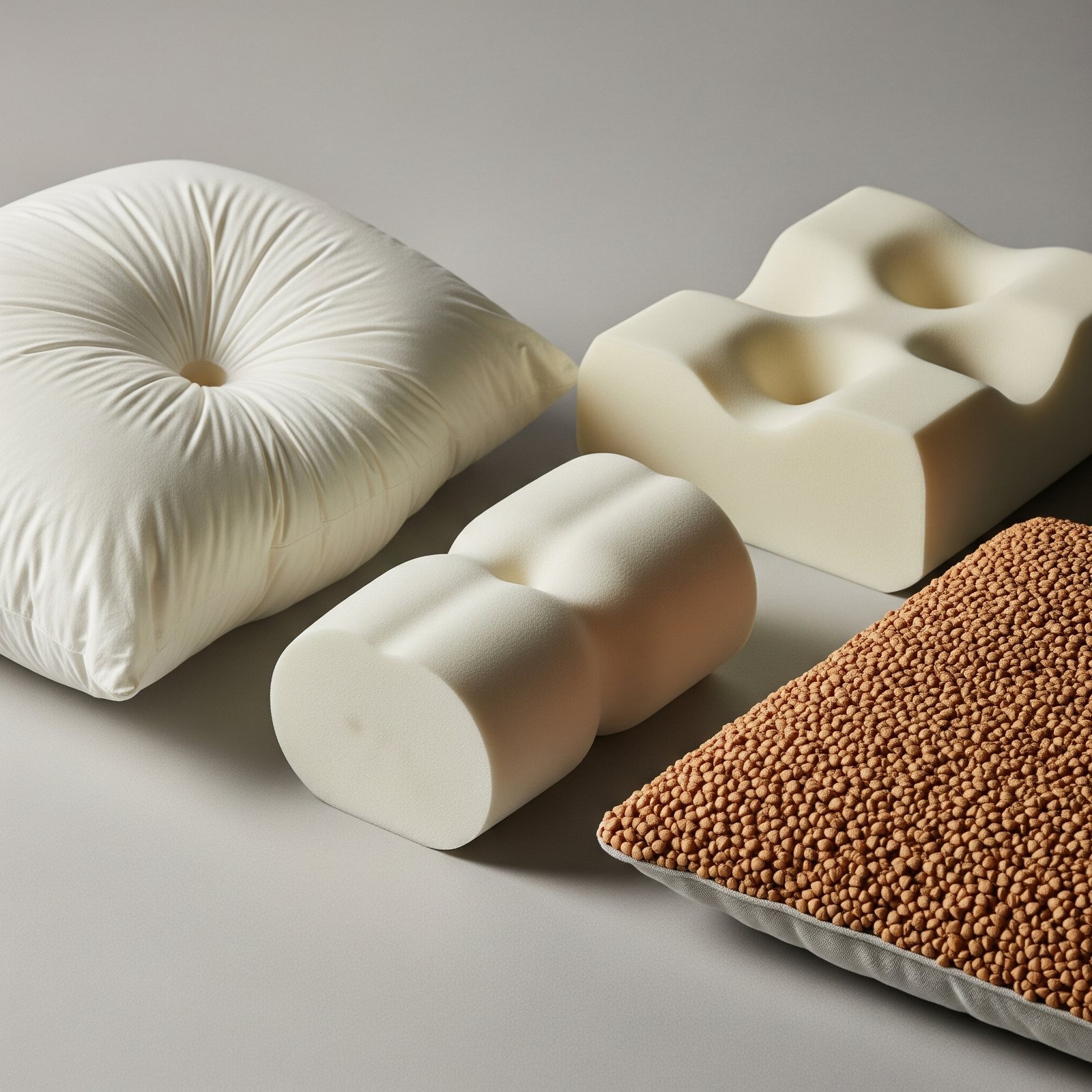
From Down to Memory Foam: A Deep Dive into Pillow Materials
When it comes to choosing a pillow, the sheer variety of materials available can be overwhelming. Beyond just softness or firmness, the filling inside your pillow dictates its support, breathability, durability, and even its suitability for allergies. Understanding these different materials is key to finding your perfect sleep companion.
Let’s take a deep dive into the most popular pillow materials, exploring their unique characteristics, pros, and cons.
1. Down and Feather Pillows
Often considered the epitome of luxury, down and feather pillows are known for their softness and moldability. Down refers to the soft, fluffy clusters found beneath the tougher outer feathers of ducks or geese, while feathers are the quilled outer plumage.
- Feel: Exceptionally soft, lightweight, and highly malleable, allowing you to shape the pillow to your desired comfort. Down offers a cloud-like softness, while feather pillows provide a bit more structure due to the quills.
- Pros:
- Luxurious comfort: Incredibly soft and plush.
- Moldable: Easily conforms to your head and neck.
- Breathable: Good airflow, helps with temperature regulation.
- Durable (down): High-quality down can last a long time with proper care.
- Cons:
- Support (down): Can compress and lose loft over the night, requiring frequent fluffing. Feathers offer more support but can poke through the fabric.
- Allergies: Can trigger allergies in sensitive individuals (though many are now treated to be hypoallergenic).
- Cost: High-quality down can be expensive.
- Best for: Stomach sleepers (for very low loft), those who love a soft, moldable feel, and back sleepers who like to adjust their pillow frequently.
2. Memory Foam Pillows
Memory foam is a type of viscoelastic polyurethane foam that was originally developed by NASA. It reacts to heat and pressure, conforming closely to the shape of your head and neck.
- Feel: Contouring, supportive, “sinking in” sensation. Can come in solid blocks or shredded pieces.
- Pros:
- Excellent pressure relief: Molds precisely to your unique shape, cradling your head and neck.
- Superior support: Maintains spinal alignment effectively.
- Durable: Tends to be very long-lasting.
- Motion isolation: Good for couples as it absorbs movement.
- Cons:
- Heat retention: Traditional memory foam can trap heat, though newer open-cell, gel-infused, or shredded versions aim to mitigate this.
- Off-gassing: May have a chemical smell initially (dissipates over time).
- Less responsive: Slower to regain shape, some may feel “stuck.”
- Best for: Side sleepers, those with neck and shoulder pain, back sleepers needing firm contouring. Shredded memory foam offers more adjustability and breathability.
3. Latex Pillows
Derived from the sap of rubber trees, natural latex is a resilient and supportive material. It’s available in two main forms: Talalay (softer, bouncier) and Dunlop (denser, firmer). Like memory foam, it can be solid or shredded.
- Feel: Responsive, bouncy, and supportive. It pushes back against your head, maintaining its shape.
- Pros:
- Excellent support and pressure relief: Contours without the “sinking” feeling of memory foam.
- Highly durable: Very long-lasting.
- Naturally hypoallergenic and dust mite resistant: Great for allergy sufferers.
- Breathable: Open-cell structure allows for good airflow, making it cooler than traditional memory foam.
- Eco-friendly (natural latex): Biodegradable and sustainably sourced.
- Cons:
- Cost: Can be more expensive than synthetic options.
- Weight: Can be heavier than other pillow types.
- Distinctive smell: Natural latex can have a faint, sweet odor initially.
- Best for: Side and back sleepers, those with allergies, hot sleepers, and anyone seeking durable, responsive support.
4. Synthetic (Polyester/Fiberfill) Pillows
These are typically the most common and budget-friendly pillows on the market, filled with polyester fibers.
- Feel: Soft, fluffy, and lightweight, often mimicking the feel of down initially.
- Pros:
- Affordable: Very accessible price point.
- Hypoallergenic: Generally safe for allergy sufferers.
- Easy to clean: Most are machine washable.
- Lightweight: Easy to move and fluff.
- Cons:
- Lacks support: Tends to flatten and lose shape quickly, leading to poor alignment.
- Short lifespan: Requires frequent replacement.
- Can clump: Fibers can clump together over time, creating lumps.
- Best for: Budget-conscious buyers, stomach sleepers (for low loft), and guest rooms where daily, heavy use isn’t expected.
5. Buckwheat Hull Pillows
These unique pillows are filled with the husks of buckwheat seeds, allowing for highly customizable support.
- Feel: Firm, dense, and highly conforming. The hulls shift and mold precisely to your head and neck.
- Pros:
- Customizable support: You can add or remove hulls to achieve your perfect loft and firmness.
- Excellent ventilation: Hulls allow for incredible airflow, making them very cool.
- Durable: Buckwheat hulls last a long time.
- Natural and hypoallergenic: Resistant to dust mites.
- Cons:
- Weight: Can be quite heavy.
- Noise: Hulls can make a rustling sound as you move.
- Firmness: Might be too firm for some preferences.
- Initial smell: Can have an earthy scent.
- Best for: Side and back sleepers needing firm, customizable support, and hot sleepers.
Choosing Your Ideal Material
With so many options, how do you decide? Consider these factors:
- Your Sleep Position: This is paramount. Side sleepers generally need more loft and firmness, back sleepers medium, and stomach sleepers very low loft.
- Desired Feel: Do you prefer soft and plush, responsive and bouncy, or contouring and supportive?
- Allergies: If you suffer from allergies, opt for naturally hypoallergenic materials or those treated to be allergen-resistant.
- Temperature Sensitivity: If you sleep hot, prioritize materials known for breathability like latex, buckwheat, or cooling-enhanced memory foam.
- Budget: Pillow prices vary significantly by material and quality.
- Maintenance: Consider how easy the pillow is to clean and maintain.
By understanding the distinct characteristics of each pillow material, you’re empowered to make an informed choice that will lead to more comfortable, supportive, and restorative nights of sleep. Happy pillow hunting!
